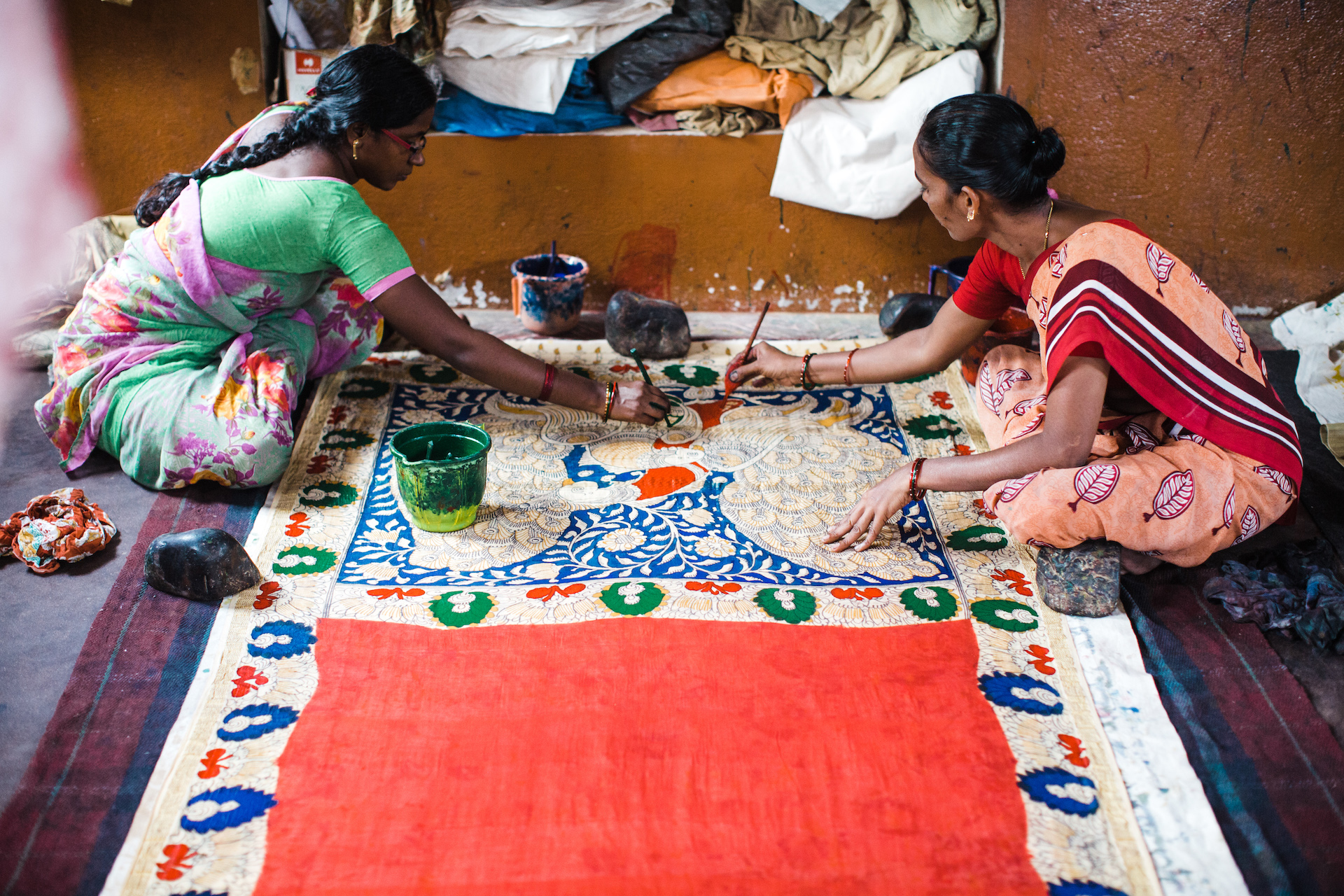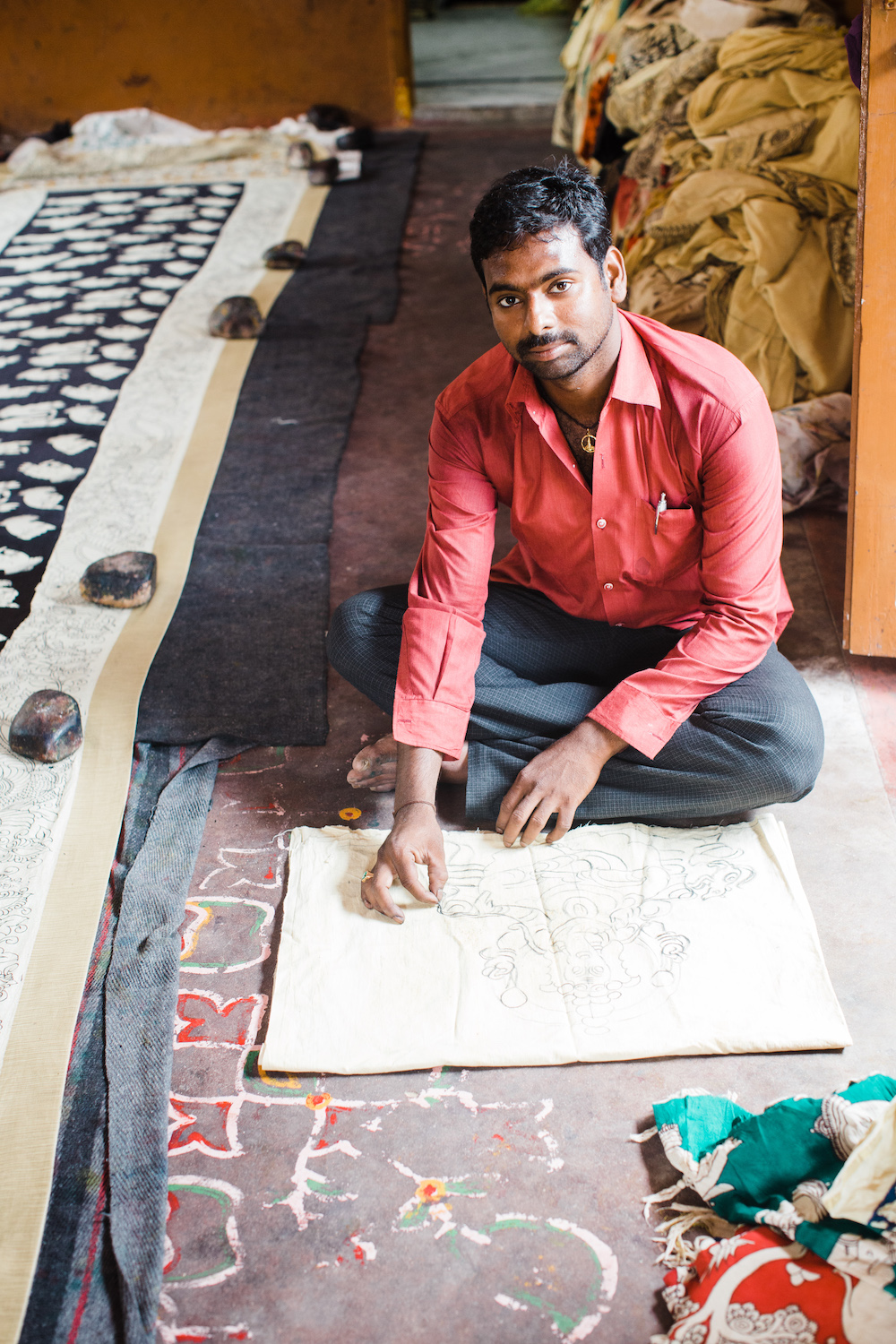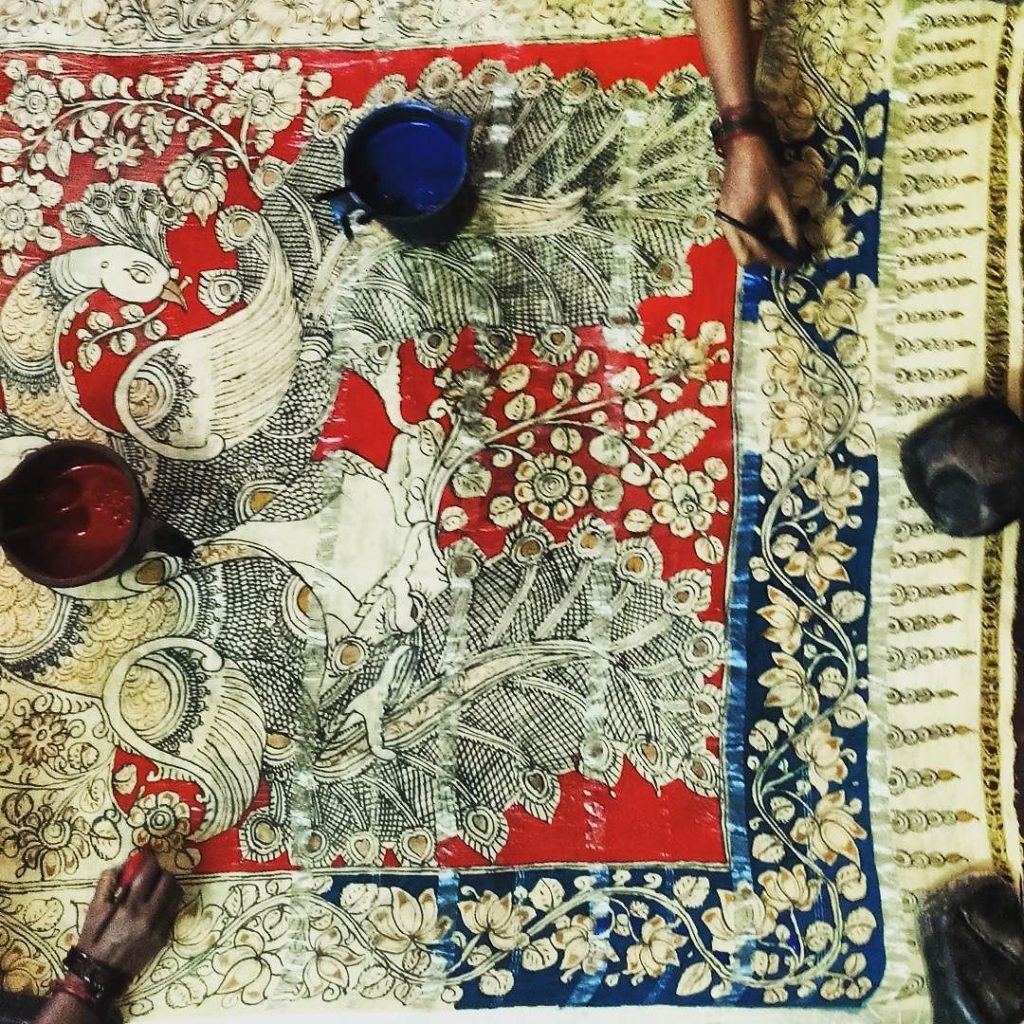Tsuktiben Jamir
In the beautiful surroundings of Srikalahasti, a small town in Andhra Pradesh, a vibrant art form known as Kalamkari breathes new life into hand-painted textiles. Amidst the narrow lanes lined with old cottages, a modern residence adorned in pink and orange stands out. Within its walls lies the renowned Sri Vijayalakshmi Fine Kalamkari Arts studio—a sanctuary for this endangered art. Here, Kalamkari artists diligently practice their craft, ensuring its survival and cultural significance.
The Kalamkari is a meticulous artform that takes 23 painstaking steps to hand-paint cotton cloth with natural dyes. The origin of this artform is Srikalahasti, a town known for its rich history and the historic Shiva temple. Kalamkari designs, which incorporate motifs like paisleys, peacocks, flowers, and Hindu epic characters, are heavily influenced by the paintings and sculptures of the temple. At the Sri Vijayalakshmi Fine Kalamkari Arts studio, the labour-intensive process of Kalamkari unfolds. Artisans begin by washing the cotton fabric in river water to fix the dyes effectively. After drying, the fabric is soaked in a special paste called pindhi, made from dried flowers mixed with buffalo’s milk, lending it a yellow hue and preventing colour bleeding.

Courtesy: SilverKris.
Once ready, the burned tamarind bark is used to turn the foundation cloth into the artwork’s outline. Vibrant colours, produced from substances like jaggery, rusty iron, alum, karkai flowers, and acacia tree extracts, are expertly applied to bring this creativity to life. The time-honoured method handed down through the generations is reflected in the multiple washings and lengthy production process of every piece.
The charm of the hand-painted Kalamkari is found in its flaws, which attest to its genuine human touch. Smudged lines and tiny bleeds emerge from the treatment and calibre of colour fixers on each piece, giving it distinctive colours that only add to its appeal. Designers like Ayush Kejriwal work with Kalamkari craftsmen to produce exquisite traditional attire for major events like weddings. In fact, the Kalamkari designs he creates are highly sought-after and among the most favoured pieces in his collection.
“But this is the beauty of hand-painted Kalamkari – the imperfections. They speak to the human element in its production,” Kejriwal told SilverKris.
To ensure the longevity of these exquisite textile treasures, proper care is essential. True hand-painted Kalamkari pieces exude a distinctive smell due to the proteins in the milk used during the process. Airing them out with incense sticks can alleviate this. Gentle washing with a mild baby shampoo, followed by air drying and proper storage in muslin cloth with silica gel, helps preserve their beauty for generations to come.

Courtesy: SilverKris.
However, the Kalamkari art form is in danger of dying out. The production of traditional Kalamkari has decreased as a result of the technique’s intricacy and difficulties in sustaining livelihoods. The market is swamped with machine-generated designs and commercial mass manufacturing, which has reduced the value of original work. It has become harder and harder for artists like M Viswanatha Reddy and G Chandra to provide for their families.
Organisations like Dwaraka, the Indian government, and the Crafts Council of India are dedicated to preserving and restoring the Kalamkari practice. These initiatives attempt to develop sustainable enterprises by providing vocational training, particularly to women in a largely male-dominated sector, and arming craftsmen with entrepreneurial skills.
International designers like Ayush Kejriwal play a crucial role in preserving the market value of this cherished craft. With a focus on collaboration and craftsmanship, Kejriwal highlights the master artisans behind his designs and promotes a culture of appreciation for their meticulous work. Ultimately, the aim is to keep the power and essence of Kalamkari in the hands of the artists, recognizing their invaluable contribution to this timeless art form. By embracing Kalamkari’s beauty and supporting its artisans, we safeguard a heritage that represents the cultural richness of India, ensuring its legacy endures for generations to come.





